iPhone 4 Review
iPhone 4 Review
With a high resolution display, a glass back, and even a gyroscope can the new Apple iPhone retain its smartphone crown?
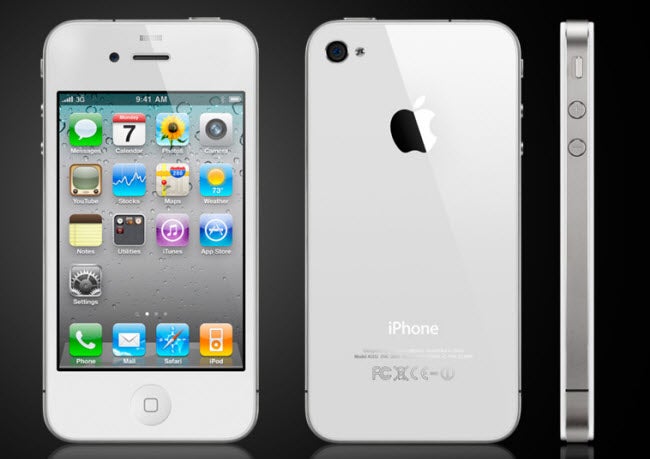
Sections
- Page 1 iPhone 4 Review
- Page 2 Bumpers & Physical Features Review
- Page 3 Call Quality & Retina Display Review
- Page 4 Camera & Facetime Review
- Page 5 Gyroscope, Connectivity & Performance Review
- Page 6 The Bottom Line Review
- Page 7 Samples Photos Review
Verdict
Pros
- Attractive design
- High resolution display
- iOS is intuitive and powerful
Cons
- Very expensive
- Battery life suffers under heavy use
- Concerns over antennae and glass
Key Specifications
- Review Price: £599.00
- Retina Display
- iOS 4
- App Store
- 5MP camera with autofocus and flash
Introduction
So, another year, another iPhone. The latest version of Apple’s iconic touchscreen smartphone is now available and it brings with it a whole host of new and innovative features. Is it worthy successor to its forebears the iPhone, iPhone 3G, and iPhone 3GS and, more to the point, is it worth its high asking price or should you hold out for the next round of Android, Windows 7, Meego, or WebOS devices? Read on to find out.
iPhone 4 – Video Review
iPhone 4 – Design
Most striking about the iPhone 4 is its new design. While the front is classic iPhone with its single piece of glass, single button, and symmetrical black bezel, the back has moved away from the curves of old to be replaced by a completely flat sheet of aluminosilicate-toughened glass (what do you mean you haven’t heard of it?!). Combined with the new flat stainless steel sides, this gives the phone a particularly industrial, minimalist look and feel that is sure to split opinion even more than existing iPhones have.
To our minds the concept is sound and we really like the exceptional fit and finish of the phone but certainly the front bezel does now look a bit tired. In particular this seems to be because the iPhone 4 is slightly narrower and taller, yet retains the same size screen, as previous models. This makes the screen look a bit lost in the vast blackness of that bezel. It’s still a pretty stunning design overall but there’s definitely a prototype/engineering sample feel that takes the edge off.
See also: iPhone 6 Plus Review
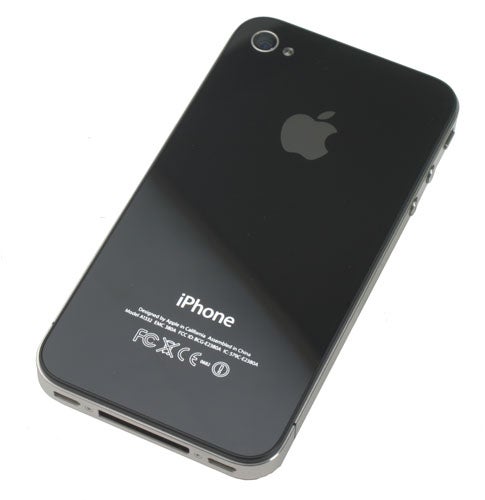
By severely shrinking many of the internal components, Apple has managed to make the iPhone 4 noticeably slimmer than its forebears at just 9.3mm, and the company even touts it as the slimmest smartphone on the market. Normally we would be concerned about this as the slimmer devices get, the more difficult they tend to be to handle but thanks to its flat sides the iPhone 4 is actually pretty easy to get a good grip on. However, the pointy edges that result from all those flat surfaces make the phone feel, if not out and out uncomfortable, certainly less comfy than many rivals and even previous iPhones. Weight remains largely unchanged at 137g, 2g more than the iPhone 3GS.
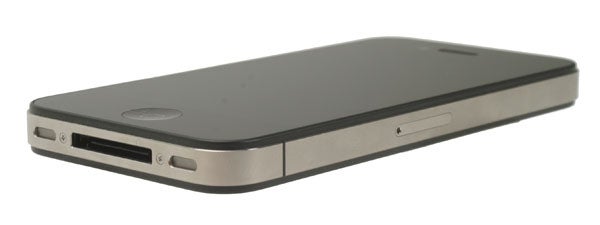
Another potential pitfall of having so much glass is its propensity to crack or shatter when knocked. However, while having glass on the front and back does double your chances of this happening, it only really matters if the screen breaks, and there’s just as much change of that happening on any other smartphone.
Moreover, in our experience, unlike plastic, glass screens are essentially scratch proof in normal use so using glass on the back as well will hopefully mean the iPhone 4 will look flawless for years to come, no matter how rough you treat it. Certainly we know many people that have not been overly careful yet own three year old iPhones that don’t have a single scratch on the screen, which is more than can be said of the aluminium and plastic backs of said phones.
One insurmountable downside of the glass design, though, is its slipperyness. It is quite remarkable how the phone will slide off almost any surface you place it on, unless it’s perfectly flat – say goodbye to resting your phone on the arm of a sofa or on your lap, unless you buy a case of course.
iPhone 4 – Bumpers
Those that ”are” concerned about wear and tear can take advantage of Apple’s Bumpers. These are the first official Apple branded cases for its iPhone products and they wrap around the edge of the new iPhone keeping the phone protected from the majority of drop related injuries. They’re made from plastic panels set into rubber rather than the clever d3o shock absorption material used in similar looking minimalist protective solutions we’ve seen previously.
They do feel quite nice on the phone, giving it that all important curved edge, which both feels nicer and is easier to grip than the naked phone, and don’t obstruct your use of the phone much at all. Also, the raised lip of rubber that runs round the edge of the front and back ‘screens’ further keeps them safe from scratching when put on a flat surface. What’s more it’s a rather nice touch that the Bumper incorporates metal buttons, just like the phone.
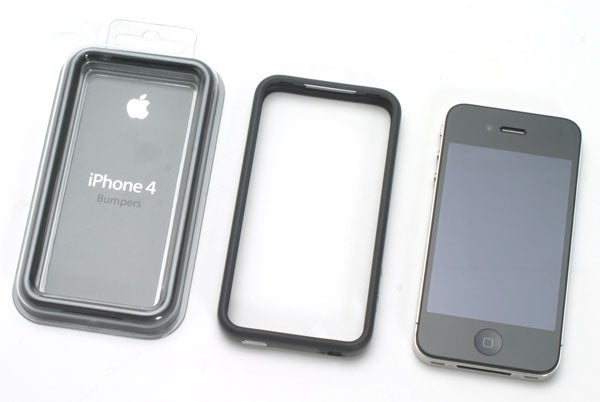
However, they do break up the minimalist look of the phone and you once again have the first-gen iPhone problem of the headphone socket being too narrow for most headphones. Also, the cynic in us may conclude that the very fact Apple has only now chosen to produce a protective case for its iPhone products suggests the new model is vulnerable, and there certainly may be ”some” merit in that. However, we think it just as likely that Apple has taken advantage of the phone’s new flat sides to provide a simple and elegant protective solution.
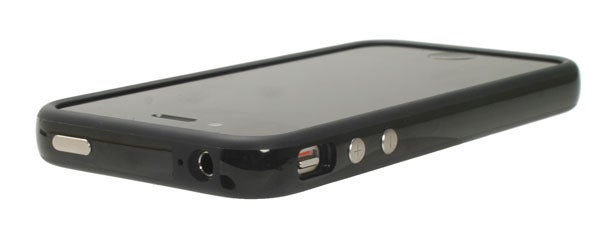
iPhone 4 – Antennagate
Looking more closely at those stainless steel sides, as Jobs rightly pointed out when he announced the iPhone 4, the gaps don’t look very ‘Apple’. However, there is method in the madness: the steel rim actually doubles as the phone’s aerial, or more precisely the phone’s aerials. By splitting the rim into two sections Apple has been able to use one section as the aerial for the mobile telephony signals of the phone and one for the local wireless services like Bluetooth and Wi-Fi. Frankly, we think it’s a piece of design genius – hard edges notwithstanding.
A potential advantage of having the aerials, which are normally housed internally, mounted on the outside of the phone is improved reception. This seems to be borne out in real life with generally fewer problems with dropped calls than previous handsets. However, there does appear to be one major oversight in Apple’s master plan: hold the phone in the wrong way (with your hand spanning the gaps as seen below) and the aerial completely shorts out and drops the call. Apple has admitted there is a problem and has even issued free bumpers to any customers that would like one – they stop your hand touching the metal so prevent the shorting out problem. Such has been the furore over this issue it has even been given a nickname – Antennagate. Ultimately, though, we have seldom found it a major problem, and wouldn’t suggest anyone be put off completely by it.
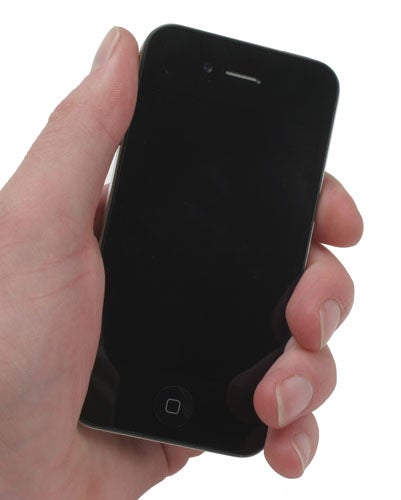
iPhone 4 – Hardware Features
Looking round the rest of the phone, there are all the usual iPhone signatures with the aforementioned circular Home button sitting below the screen; volume controls, which are now split up into two buttons, on the left edge below the mute switch; lock button on the top edge; and dock connector on the bottom edge along with the speaker and microphone. All the buttons, like the phone in general, feel solid and have a really pronounced action so you know for sure when you’ve pressed them. The mute switch has been stiffened up and reduced in size, so it’s not so easy to knock when in a pocket, but ironically it does now make it quite difficult to use. Likewise, the volume buttons aren’t quite so easily activated, requiring quite a precise press rather than a general prod.
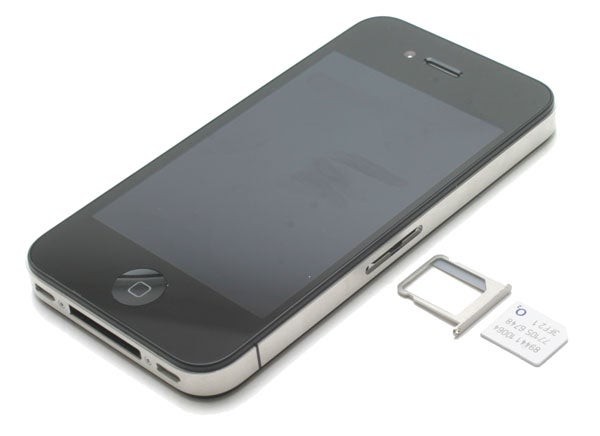
iPhone 4 – MicroSIM, Battery and Storage
Another change is the SIM slot, which used to be on the top edge. This has now moved to the right edge and it also uses a micro SIM. This is a bit annoying, but you can just cut down a normal SIM to fit and adapters are available to make your small SIM fit back in a normal slot. Apple’s perennial annoyances of having no expandable storage or removable battery also remain.
iPhone 4 – Noise Cancelling Microphone and Call Quality
In addition to the normal microphone, Apple has added a second one on the top edge, finally giving the iPhone noise cancellation. This greatly improves the phone’s ability to suppress background noise and bring clarity to your voice when making calls. In our tests it proved very effective, successfully filtering out the noise of passing cars and other background din. It’s a welcome feature, but it would of course be remiss of us not to point out that this is a feature other decent phones have had for many a year and the iPhone is really just playing catchup here.
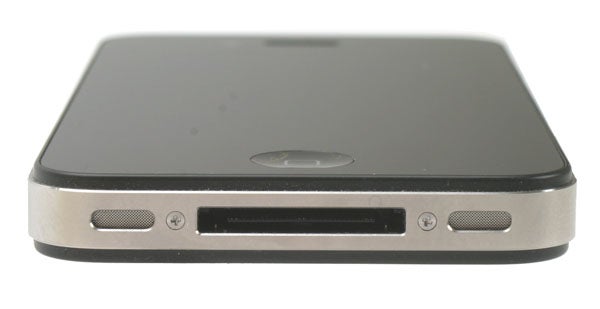
iPhone 4 – Speaker
As for the phone’s speaker, it remains mono and of the same quality as previous iPhones, so watching video and listening to music is limited in scope. However it’s still impressively loud and adequate for listening to quiet music in bed, showing your mates a YouTube clip, or of course making a speaker call. Incidentally, the earpiece appears to have improved, with it being less sensitive to how you press it against your ear. One oddity is the speaker and microphone have swapped places on the new phone, with the speaker now behind the left grill and the mic on the right.
iPhone 4 – Retina Display
After its class-leading build quality and design, the iPhone 4’s next standout feature is its screen. Sporting 960 x 640 pixels, it has four times as many as previous iPhones and more than ”most” other smartphones out there. Apple calls this its Retina Display as its pixel density of 326px per inch is greater than the human eye can distinguish. Marketing jargon though this is, the new screen is undoubtedly sharper than any we’ve seen previously and is quite something to behold.
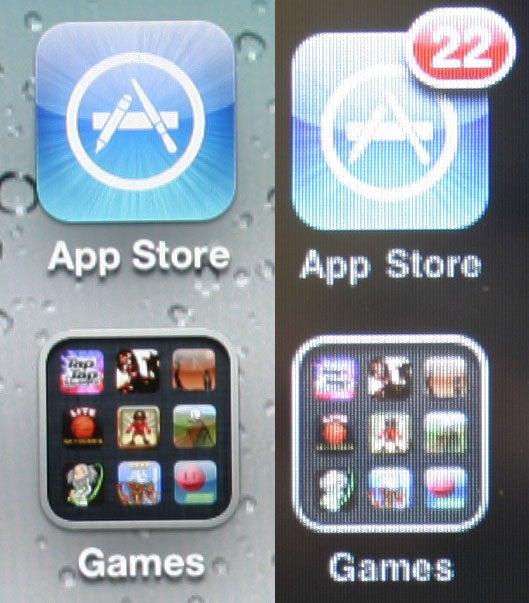
Can you guess which screen is which?
However, in practice it didn’t actually make a huge difference to how we used the phone. We’d still generally zoom in to about the same level to read a block of text simply because having it any smaller would require holding the device three inches from our faces to make out the words. Obviously it’s a great feature, but if you’ve been touting this as the reason to upgrade be prepared to be slightly underwhelmed.
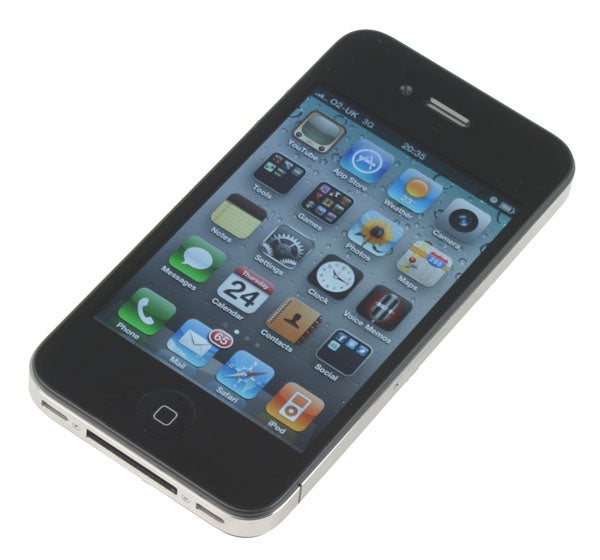
Perhaps of more import, Apple has also quadrupled the contrast ratio, giving images a greater sense of depth and punch. Viewing angles are also excellent and a notable improvement over previous gen devices. All told, this is the best LCD screen we’ve seen on a phone.
As for the fact that Apple hasn’t used OLED display technology, well it does mean the display’s viewing angles aren’t quite as flawlessly impressive and colours aren’t quite as saturated as they could be. However, colours instead look more natural than on most OLED screens we’ve seen and, because of the transflective nature of LCD panels, the iPhone’s screen is much easier to see in bright sunshine, if you can avoid reflections of course. One final note on the screen, it has a much blacker background, when off, than previous iPhones so the screen almost completely disappears from view. It’s a small thing, but it definitely adds to the phone’s feeling of quality.
iPhone 4 – Camera
Though not as revelatory as the introduction of video and auto focus seen on the 3GS, the camera on the iPhone 4 is still a notable upgrade. With a five megapixel (5MP) sensor and LED flash, its core specs are merely inline with most smartphones and still trail most dedicated camera phones. However, a camera is about more than just its megapixel count; there’s the lens quality, sensor size, image processing, ease of use, and performance.
As such Apple points out the sensor in its camera is of the new backside illuminated variety that are supposed to have inherently better lowlight performance than conventional sensors. This was certainly borne out in our tests, where we noticed less grain and colour distortion in the iPhone’s photos. It also seemed to reproduce detail and colour better overall than many standard phones we’ve tried. Be under no pretence, though, it is still well within the realms of phone-camera quality.
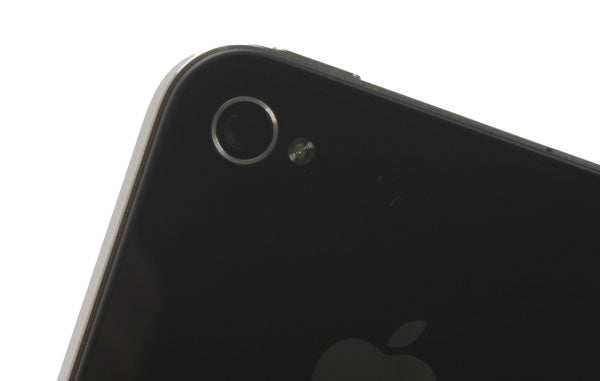
What really helps the iPhone’s photo taking abilities is the camera application, which is wonderfully easy to use with just a flash on/off/auto icon in the top left and an icon in the top right that flips between the front and back facing cameras, in addition to the existing three icons along the bottom for the picture gallery, shutter, and switching between video and stills. The app also loads pretty quickly and you can rattle off around six shots in ten seconds, which is very impressive for a phone. With the latest iOS 5 update you can also use the volume up button as the shutter button, which is useful for when you’re shooting at such an angle that it’s difficult to see the screen, such as when doing self portraits.
iPhone 4 – Video Camera
As for that video mode, again the app is impressively easy to use and quick to respond. However, much as with the first phone we reviewed with 720p video, the Sony Ericsson Vivaz, the resulting footage leaves a lot to be desired. It is of course good for a phone and looks okay on the phone’s screen, but watch it on a decent screen and the footage’s dull colours and inability to deal with high contrast situations (like bright sunshine) really show up.
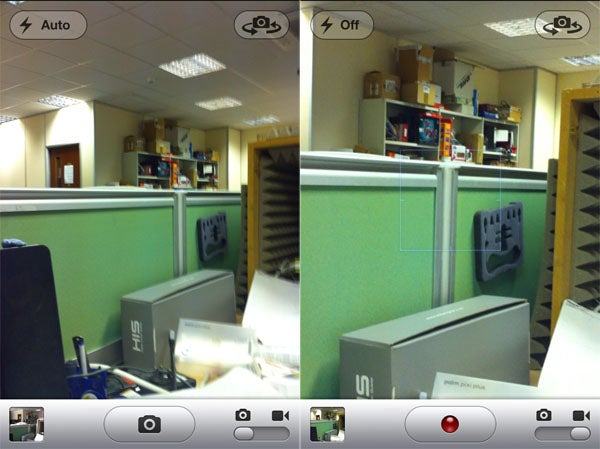
So, while quality isn’t spectacular, both videos and photos are adequate for the casual social use they will see and the iPhone 4 makes taking and using that footage as easy as possible. For a start, as with the 3GS, you can crop the beginning and end off your video before uploading to youtube, emailing to a friend, or sending via MMS. What’s more, if you download the iMovie app, which costs £2.99, you can even do some quite sophisticated video editing right on the phone.

Clips can be combined into a timeline along with pictures and you can even overlay music or a voice over. There are multiple transitions to choose from, all manner of overlays and titles, and you can even apply effects, like the Ken Burns effect, to keep your footage interesting. Once complete you can export your video at 360p, 480p or 720p quality and from there you can then upload it to youtube or send it to a friend.
You can also choose from five preset themes, which determine introduction screens, overlays, and transitions and you can just drop your footage in to create a quick film. Particularly clever is the Travel theme that will reference the geotagged info in your video footage and show the location on a map in the background. It’s a seriously neat bit of software that’s so easy to use, and for the money it’s an absolute steal.
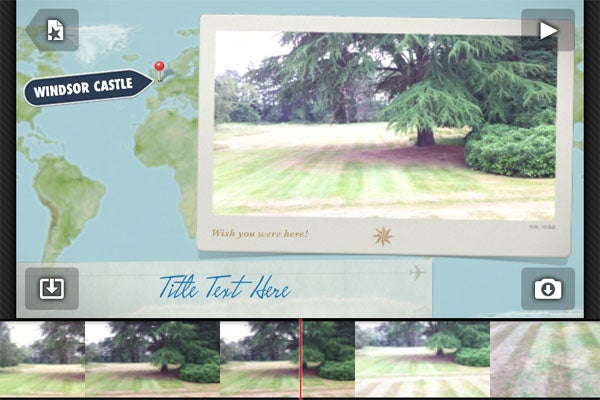
iPhone 4 – Facetime
The final piece in the iPhone 4’s video related puzzle is its video calling application, Facetime. Announced with much fanfare, it allows you to seamlessly flip between video calling or voice calling and between the VGA front facing camera and the main camera on the rear so the person you’re chatting to can see your face or what you’re looking at. It’s very easy to use and quality is excellent. In fact, it’s so nice to use, we could even learn to see the benefits of video calling. However, at the moment it’s only available from iPhone 4 to iPhone 4 and only over Wi-Fi so a killer feature, it certainly isn’t. Moreover, the front facing camera can’t be used at all for conventional video calling.
iPhone 4 – Connectivity and Internal Hardware
Another new internal feature of the iPhone 4 is a three-axis gyroscope, which gives it the ability to detect pitch, roll and yaw. Along with the existing accelerometer this gives it six-axis of motion detection, allowing Wii-mote levels of gesturing to control games and other apps. Sadly we couldn’t get hold of any applications that took advantage of this, though expect them to start arriving thick and fast.

Wireless connectivity has also had a boost with 802.11n Wi-Fi and HSUPA to augment the wireless connections on previous models. The faster Wi-Fi is a nice addition, but has few practical uses that we can see beyond it being a slightly more stable and longer range connection. It’s main advantage of greater transfer rates is made moot by Apple still not alowing wireless syncing and data transfer.
For all other applications like downloading apps and files, your broadband is more likely to be the limiting factor before your Wi-Fi. As for the HSUPA, again, it’s a nice addition but so few network providers support it that you’re unlikely to see massive gains. Certainly in our tests, we saw no significant or consistant difference between an iPhone 3G and the iPhone 4 when both on O2.
iPhone 4 – Battery Life
Despite all these hardware improvements, Apple has actually managed to improve battery life with you getting up to 7h 3G talk time, 6h 3G browsing, 10h Wi-Fi browsing, 10h video playback, 40h audio playback and 300h on standby. This compares to the 3GS figures of 5h 3G talk time, 5h 3G browsing, 9h WiFi browsing, 10h video playback, 30h audio playback and 300hrs on standby. We simply haven’t had the phone long enough to fully test these claims, but early indications are that it does indeed last that bit longer with a day’s intensive using less battery than we would expect. Whether it will stretch to more than a day with anything like extensive use, we’re yet to see, though.
iPhone 4 – Performance and A4 Processor
To power all the extra pixels in its screen, Apple has given the iPhone 4 a major speed bump, adding the same A4 processor as used on its iPad. We still can’t get any word on whether it actually runs at the same speed (we’re assuming it’s slower) as the that in the iPad but certainly all the same features, like HD video playback, are there.
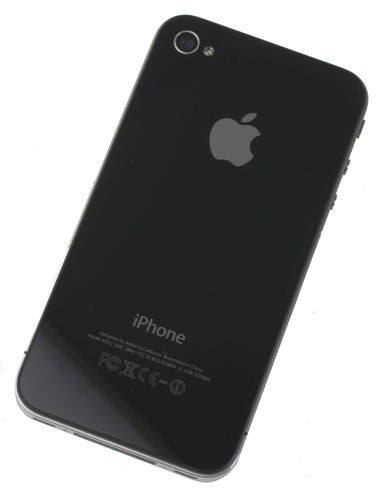
The result is a phone that feels noticeably, if not significantly, faster than the 3GS, which itself was a huge improvement over the iPhone 3G and ‘2G’. It does, however, seem slower than the iPad. In terms of out and out app performance, it’s probably no quicker than the latest alternative smartphones that use the 1GHz Qualcomm Snapdragon processor, like the HTC Desire, but the general interface is easily as snappy.
In terms of what the extra power does mean for application performance, it’s difficult to tell. The huge catalogue of existing games and apps are of course all programmed to work on the existing iPhones so we’ve yet to see any app that really pushes the new hardware. Certainly those existing ones we tried did look and feel better and faster. Games in particular really benefited from the combination of the improved screen and performance and provided a much more rewarding and immersive experience.
iPhone 4 – iOS 4 Interface
In case you were wondering where all the talk of this phones software features has gone, we already covered all the new features of the latest Apple mobile OS, iOS4, so we refer you to that for the full low down. The big headlines, though, are support for multi-tasking, the introduction of iBooks, the ability to group apps into folders, and a unified mailbox.
Running backwards, the unified email allows you to view all your emails from multiple accounts in a single mailbox. Meanwhile, grouping apps into folders enables you to cut down the number of pages of apps you have to keep things neat and organised. The big two, then, particularly with reference to the new hardware of the iPhone 4 are iBooks and Muilti-tasking.
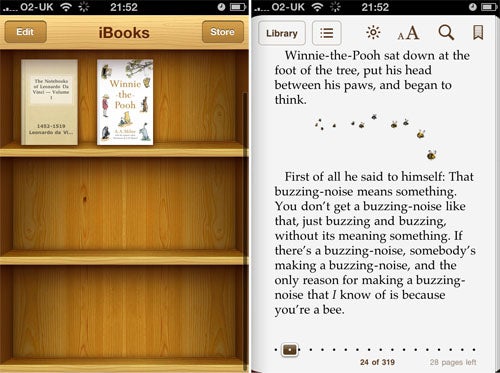
With its superb new screen, the iPhone 4 really shows the electronic books of iBooks off at their best. Certainly our caveats about the size and glossiness of the screen still stand but otherwise, reading books on the iPhone 4 is a very nice experience. Not that we feel it will replace a proper printed novel or e-ink ebook reader for reading comfort, especially when on the beach or anywhere outside, but for a twenty minute read on the daily commute it’s a very real option, and with out-of-copyright books being free, there’s plenty to get you started without spending a penny.
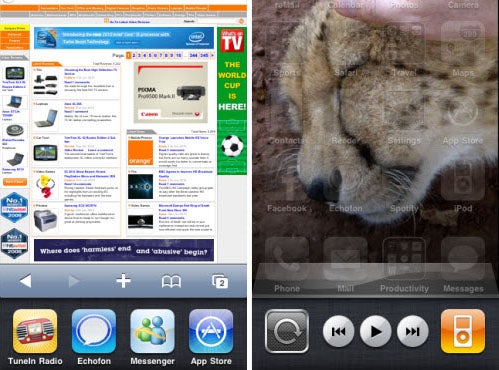
As for multi-tasking, we’ve again already covered the fact that it isn’t true multi-tasking – as you can’t have two windows open at once – but for a phone environment it’s perfectly adequate, and the speed and massive 512MB of RAM of the iPhone 4 means you can run a huge number of apps before performance is affected and you need to close a few. Having to double tap the Home button then swipe along the row of icons along the bottom isn’t perhaps the best way to manage your open apps, and we do wonder whether Apple needs to have a fairly major rethink of its UI in the near future because of this, but for the time being the overall ease of use of the operating system still puts it well ahead of most of the competition (watch out for our upcoming video review for more of an idea of the interface if you’re unfamiliar).
iPhone 4 – Price and Value
So, as with all these things, we eventually come down to price and here’s where much of the gloss of the iPhone 4 starts to come off. Laudable, it is, that for the first time the iPhone is available direct from Apple completely unlocked, so you can put whatever (micro) SIM you like in it and away you go. However, with the 16GB version costing £499 and the 32GB one, an almighty £599, you have really want one to justify the cost. To put these numbers into perspective, the HTC Desire (which incidentally has shot up in price since it was released) is around £380 SIM free. It doesn’t have much internal storage but you can add a 16GB microSD card for £20 or a 32GB one for £100.
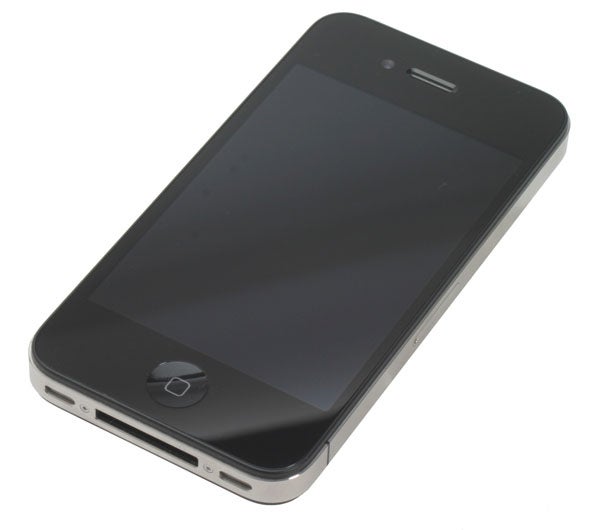
The real kicker, though, is contract prices are still pretty darned high. About the cheapest going (though all the networks are much of a muchness) is O2, but even it can only offer the 16GB model for £179 on an 18 month £30pm contract while it asks £279 for the 32GB model. Move up to £45 a month and prices start getting sensible at £59 and £149 but you’re paying £45 for 18 months! The only consolation here is that subsidies for competing handsets seem to have dropped significantly, so the gap is greatly reduced. For instance you can get an HTC Desire for £60 on an 18 month £30pm contract on T-Mobile. Still cheaper, but not such a crazy margin as SIM free.
Verdict
Ultimately, though, while our reflections on price – and this review in general – may have a slightly dour tone this is largely because the iPhone 4 looked to be something truly amazing and has only proven to be a solid improvement. But, be under no illusion, the iPhone 4 is still far and away the best smartphone on the market. It’s build quality puts others to shame, it has a style all of its own, its operating system is still the easiest and slickest to use, its app store is unsurpassed, and it has some class leading features.
The ”only” real sticking point is price. So if you can take the extra £200 or so that it’ll cost to get an iPhone 4 over any other smartphone then you’ll almost certainly be happy. If, however, you’re really scraping your pennies together for an upgrade (especially if you’re already an iPhone 3GS or other top-end smartphone user) then we think you’d be better off sitting tight for a while, especially as the new version of Android has just arrived.
iPhone 4 – Sample Images

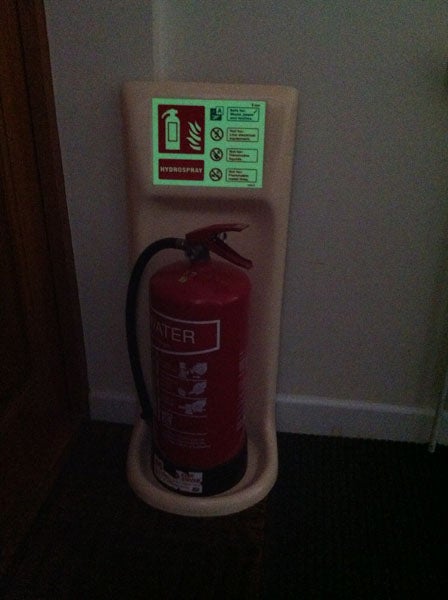

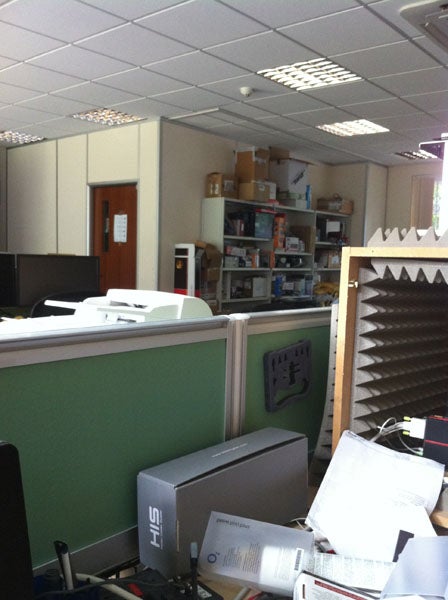


How we test phones
We test every mobile phone we review thoroughly. We use industry standard tests to compare features properly and we use the phone as our main device over the review period. We’ll always tell you what we find and we never, ever, accept money to review a product.

